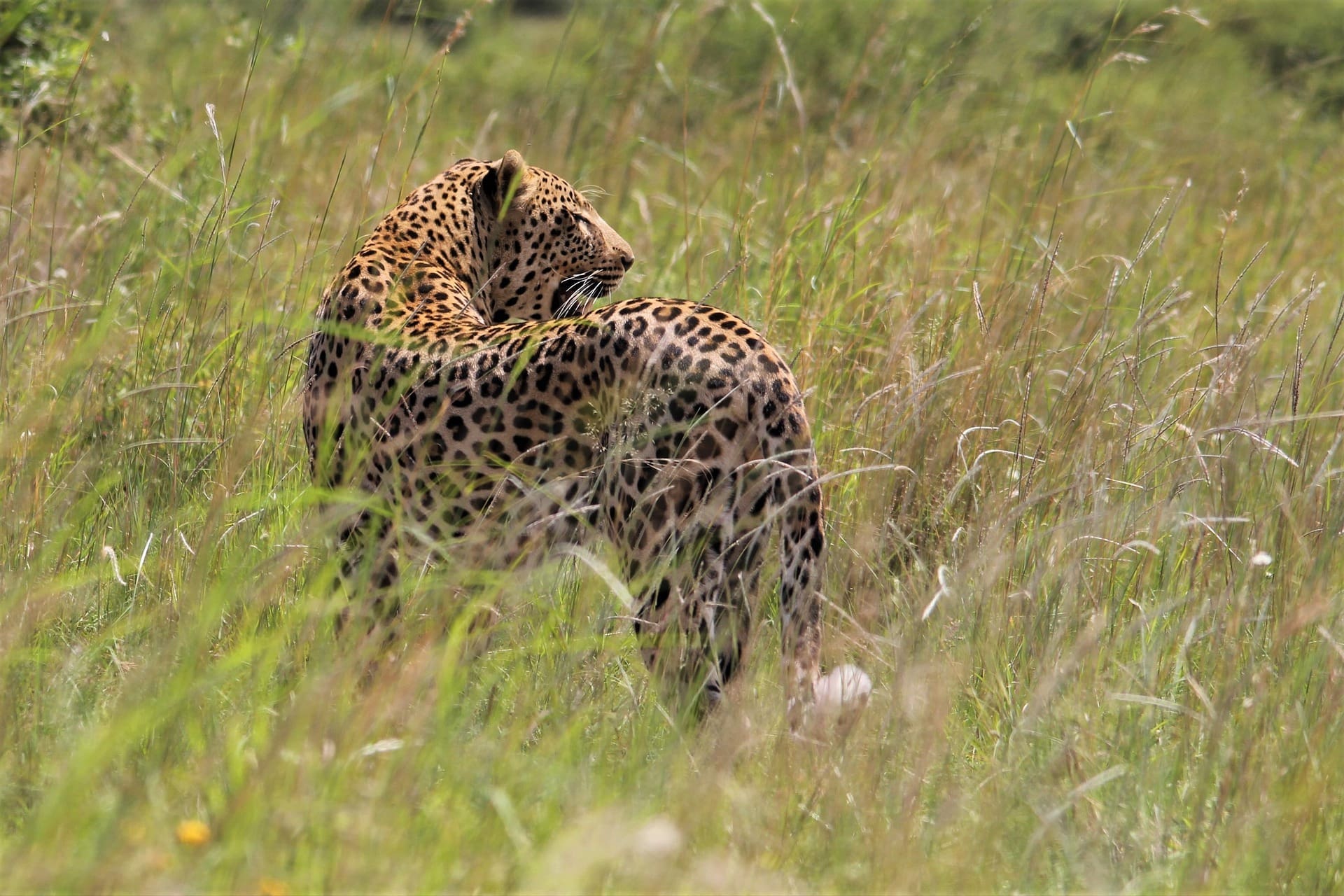Imagine the sun rising over a vast African savannah, the sky painted in hues of orange and pink. As you turn the ignition of your 4×4, the early morning air is filled with the sounds of the wild waking up – birds chirping, distant roars, and the rustle of leaves. Welcome to the world of self-drive safaris in Southern Africa.
Southern Africa offers a plethora of self-drive destinations that cater to all levels of experience and enthusiasm. From the legendary Kruger National Park in South Africa to the remote and rugged Kgalagadi Transfrontier Park, each destination has its own unique charm and set of challenges.
Some parks are renowned for their dense populations of elephants, like Chobe National Park in Botswana, while others, like Namibia’s Etosha National Park, offer surreal landscapes dotted with salt pans and waterholes teeming with wildlife.
In this guide, we’ll take you through the top 10 self-drive safari destinations in Southern Africa. We’ll delve into what makes each park special, provide practical information on location and costs, and share insider tips to ensure you have an unforgettable adventure.
Whether you’re looking to spot the Big Five, capture breathtaking landscapes, or simply immerse yourself in the raw beauty of the wild, we’ve got you covered.
The Top Self-Drive Safari Destinations in Southern Africa:
1. Kruger National Park, South Africa
Kruger National Park is the granddaddy of all self-drive safari parks. It’s the place where dreams of wild Africa come to life. Spanning nearly 20,000 square kilometers, Kruger is a colossal playground for nature lovers and wildlife enthusiasts. From the moment you enter, you’re immersed in a world where the Big Five roam freely and every turn of the road promises a new adventure.
Unique Features
What sets Kruger apart is its incredible biodiversity. With over 147 species of mammals, 500 bird species, and a variety of flora, it’s a hotspot for wildlife watching.
The park is famous for its Big Five – lion, leopard, elephant, buffalo, and rhinoceros – but there’s so much more to see. Picture herds of zebras and impalas grazing, hippos lounging in waterholes, and giraffes gracefully nibbling on acacia leaves.
Location & Access
Kruger is conveniently located in the northeastern part of South Africa, easily accessible from Johannesburg. The most popular entry points are through the southern gates – Numbi, Phabeni, and Paul Kruger – which are roughly a 4-5 hour drive from Johannesburg.
For those flying in, the Kruger Mpumalanga International Airport (MQP) in Nelspruit offers a quick route to the park’s gates.
Costing
Visiting Kruger doesn’t have to break the bank. Entry fees are around ZAR 424 per adult per day for international visitors, while South African residents enjoy a discounted rate.
Accommodation options are diverse, ranging from basic campsites starting at ZAR 300 per night to luxury lodges that can cost upwards of ZAR 5000 per night. Whether you’re a budget backpacker or looking for a splurge-worthy stay, Kruger has something for everyone.
Tips for Visiting
- Best Times to Visit: For optimal wildlife viewing, visit during the dry winter months from May to September when animals congregate around water sources. The summer months (October to April) bring lush landscapes and great birdwatching, but also higher temperatures and a chance of rain.
- Essential Gear: Pack a good pair of binoculars, a reliable camera, sunscreen, insect repellent, and plenty of water. Don’t forget a detailed map of the park – GPS can be unreliable in remote areas.
- Recommended Routes: The southern part of the park is known for its high density of wildlife. Try the S114 loop for a good chance of spotting lions or the H4-2 road towards Lower Sabie for a scenic drive along the Sabie River.
Kruger National Park isn’t just a destination; it’s an experience. Every visit is different, with new sights, sounds, and encounters that keep adventurers coming back for more. So buckle up and prepare to be amazed – Kruger is calling.
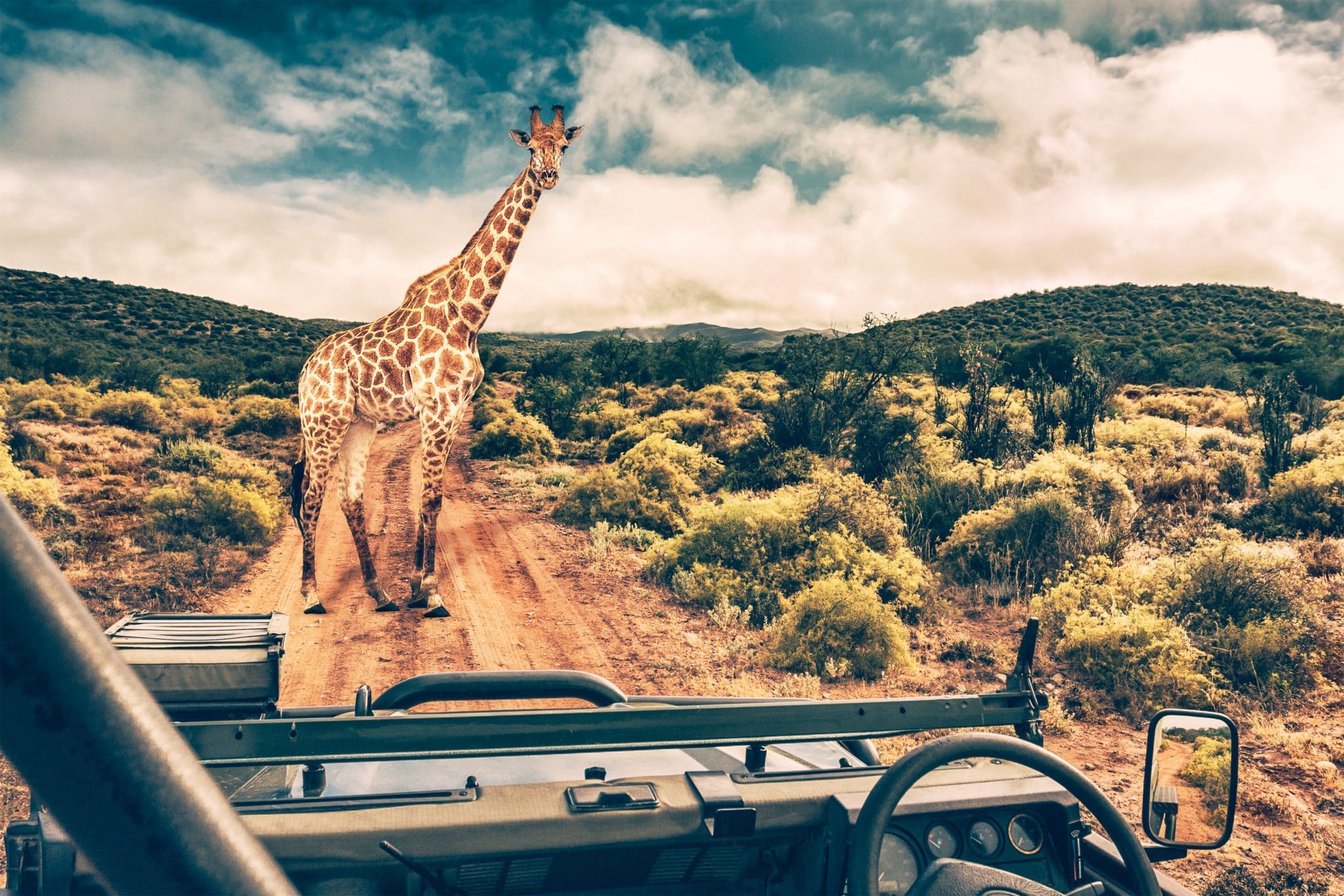
2. Addo Elephant National Park, South Africa
Addo Elephant National Park is South Africa’s hidden gem, a less crowded alternative to the more famous Kruger.
Located in the Eastern Cape, it’s renowned for its large elephant population and diverse ecosystems. From dense thickets to expansive dunes, Addo offers a unique safari experience with a relaxed vibe.
Unique Features
As the name suggests, elephants are the stars of the show at Addo. The park is home to over 600 elephants, making sightings almost guaranteed. But it’s not just about elephants – Addo is also home to lions, buffalo, black rhinos, and a variety of antelope species.
The park extends to the coast, including the Alexandria Dune Fields, the largest and least degraded coastal dune fields in the southern hemisphere.
Location & Access
Addo is conveniently located about an hour’s drive from Port Elizabeth, making it easily accessible for a weekend getaway or part of a longer road trip. The park’s main entrance is near the town of Addo, with well-maintained roads leading into the park.
Costing
Entry fees for Addo Elephant National Park are approximately ZAR 360 per adult per day for international visitors, with discounted rates for South African residents.
Accommodation ranges from budget-friendly campsites at around ZAR 200 per night to more luxurious lodges that can cost up to ZAR 3000 per night.
The park’s main rest camp, Addo Rest Camp, offers a variety of accommodation options including chalets and cabins.
Tips for Visiting
- Best Times to Visit: Addo can be visited year-round, but the dry winter months (June to September) are ideal for wildlife viewing as animals gather around water sources. Summer months (December to February) can be hot but offer lush landscapes.
- Essential Gear: Bring binoculars, a camera with a good zoom lens, sunscreen, insect repellent, and plenty of water. A detailed map of the park is also handy.
- Recommended Routes: Start with the main game area around Addo Rest Camp. The Hapoor Dam is a hotspot for elephant sightings. Don’t miss the Zuurberg section for stunning landscapes and the Woody Cape area for coastal scenery and hiking.
Addo Elephant National Park offers an intimate and rewarding safari experience away from the crowds.
With its impressive elephant herds and diverse habitats, it’s a must-visit for anyone looking to explore South Africa’s wild side.
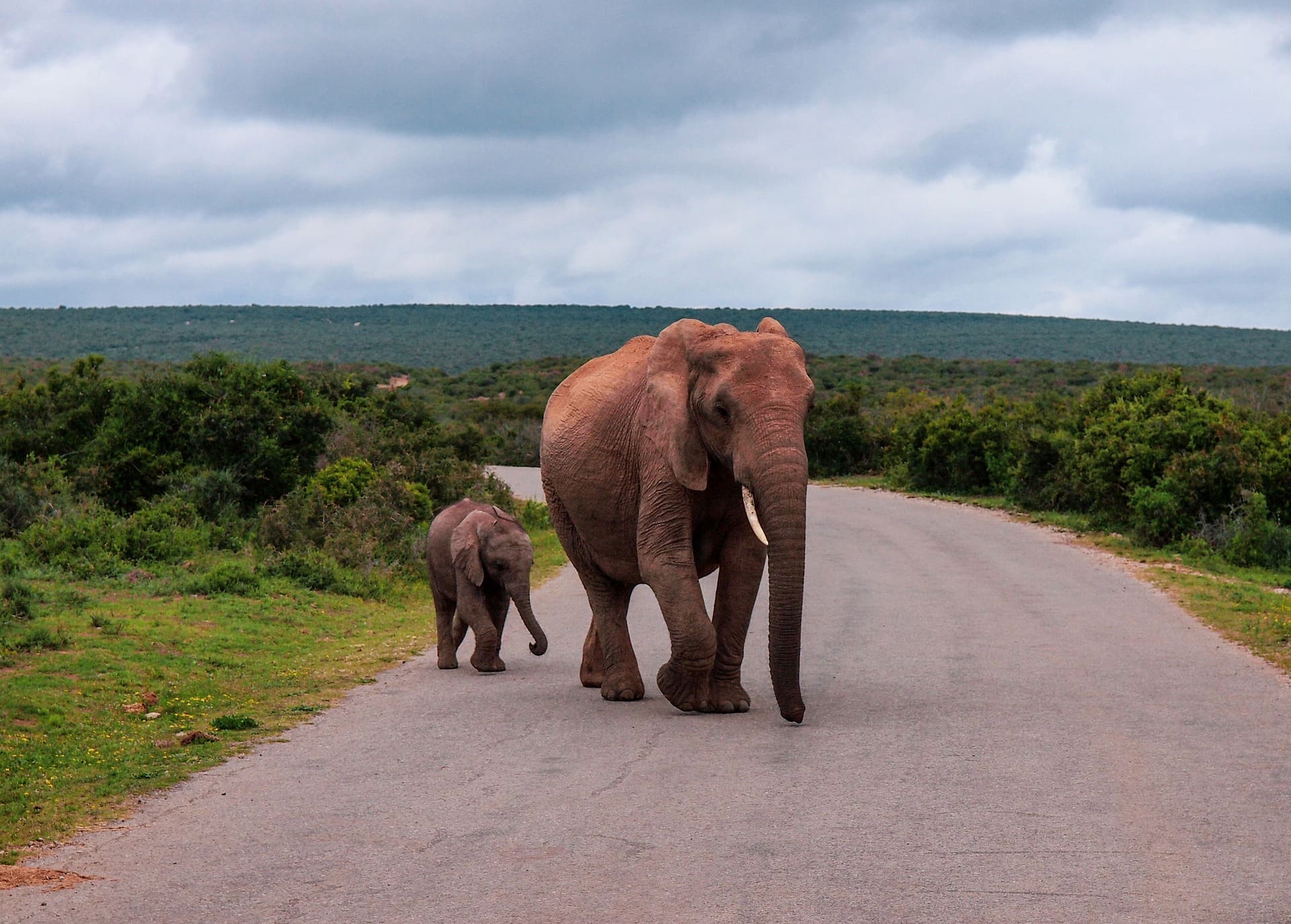
3. Etosha National Park, Namibia
Etosha National Park is Namibia’s crown jewel, a place where the wilderness feels almost surreal.
The vast, shimmering salt pans and the rich wildlife make Etosha a unique safari destination.
It’s a self-drive paradise where you can experience the raw beauty of the Namibian landscape and witness nature in its most untamed form.
Unique Features
The heart of Etosha is the Etosha Pan, a massive, flat salt pan that can be seen from space. During the dry season, it’s a stark white expanse, but when the rains come, it transforms into a shallow lake attracting thousands of flamingos and other bird species.
The park’s waterholes are the main attraction, acting as magnets for wildlife, including elephants, lions, rhinos, and an array of antelope species. Night drives are also a highlight, offering a chance to see nocturnal animals like leopards and hyenas.
Location & Access
Etosha is located in the north of Namibia, about a 5-hour drive from the capital, Windhoek. The park has several entry gates, with Anderson’s Gate being the most popular, providing easy access to the central part of the park.
The roads within Etosha are well-maintained, making it accessible even for standard vehicles, although a 4×4 is recommended for exploring more remote areas.
Costing
Entry fees for Etosha are quite reasonable, around NAD 150 per adult per day. Accommodation ranges from basic campsites at around NAD 200 per night to luxury lodges that can go up to NAD 4000 per night.
There are also a few affordable rest camps like Okaukuejo, Halali, and Namutoni, which offer both camping and more comfortable lodging options.
Tips for Visiting
- Best Times to Visit: The dry season (May to October) is ideal for wildlife viewing, as animals congregate around waterholes. The wet season (November to April) brings lush landscapes and excellent birdwatching opportunities.
- Essential Gear: Bring a good pair of binoculars, a camera with a zoom lens, plenty of water, sunscreen, and insect repellent. A map of the park is also essential.
- Recommended Routes: Start your drive from Anderson’s Gate and head to Okaukuejo, known for its floodlit waterhole. The drive to Halali and then to Namutoni covers diverse habitats and waterholes, ensuring varied wildlife sightings.
Etosha National Park is more than just a safari destination; it’s a place where the landscape itself is as much a star as the animals. With its vast open spaces and incredible wildlife, Etosha promises an unforgettable adventure for those willing to explore its unique terrains.
So gear up and get ready for an epic journey into one of Africa’s most extraordinary parks.
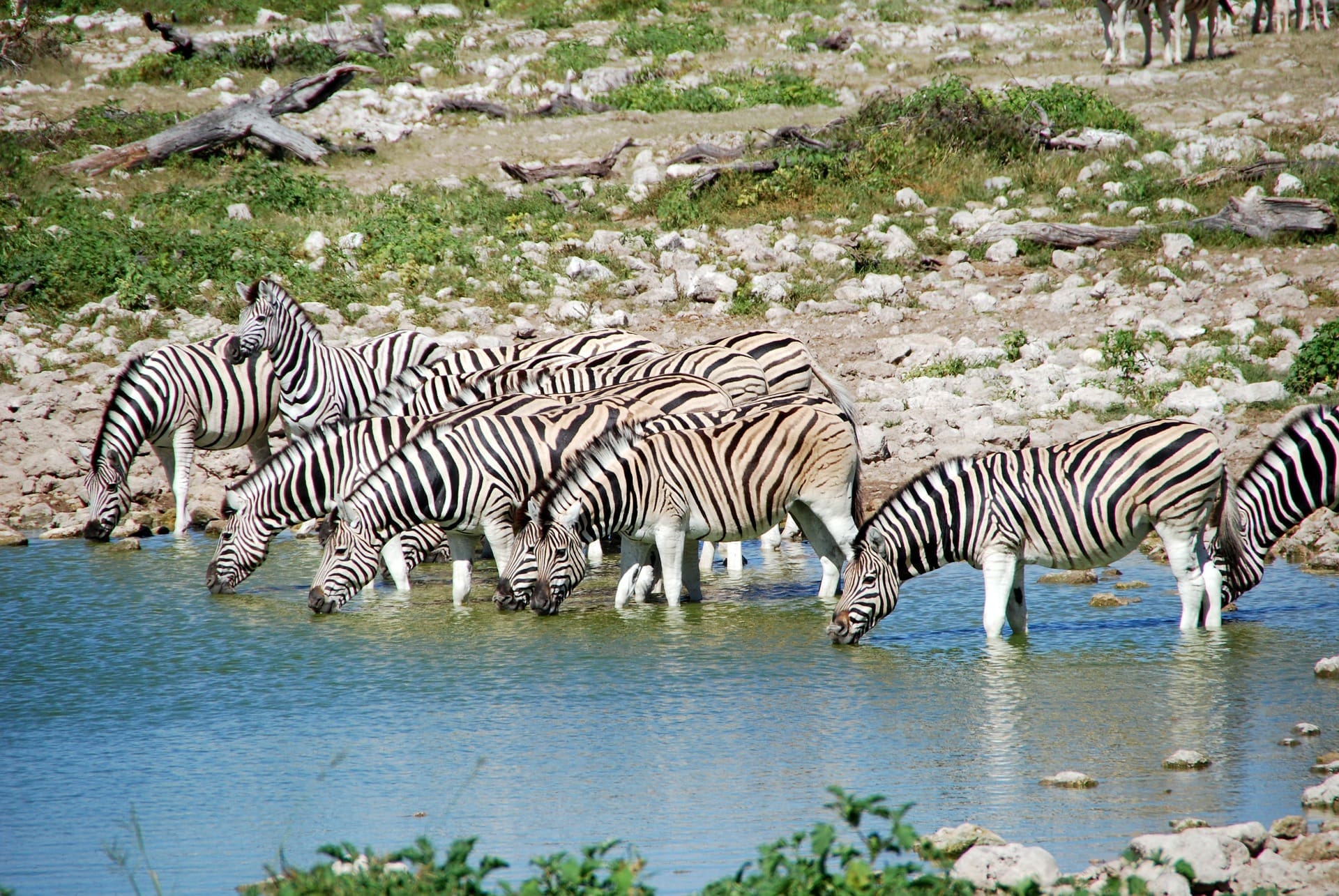
4. Kgalagadi Transfrontier Park, South Africa
Kgalagadi Transfrontier Park is where the wild, red sands of the Kalahari meet endless blue skies.
Spanning the borders of South Africa and Botswana, this remote and rugged park is a paradise for those seeking an off-the-beaten-path adventure.
The Kgalagadi is famous for its unique landscapes, predator sightings, and the sense of solitude it offers.
Unique Features
The park is known for its striking red dunes, sparse vegetation, and dry riverbeds. It’s home to the famous black-maned Kalahari lions, as well as cheetahs, leopards, and hyenas.
Birdwatchers will be thrilled by the variety of raptors, including the majestic martial eagle. The park’s waterholes are key spots for wildlife viewing, particularly in the dry season.
Location & Access
Kgalagadi Transfrontier Park can be accessed from both South Africa and Botswana. The main entry points are the Twee Rivieren Gate in South Africa and the Two Rivers Gate in Botswana.
Twee Rivieren is about a 10-hour drive from Johannesburg or a 5-hour drive from Upington. For those coming from Botswana, the park is accessible via the town of Tsabong. The roads within the park are sandy and often require a 4×4 vehicle.
Costing
Entry fees for Kgalagadi Transfrontier Park are approximately ZAR 356 per person per day for international visitors. Accommodation options range from basic campsites starting at ZAR 300 per night to more luxurious lodges like !Xaus Lodge, which can cost up to ZAR 4000 per night.
The park’s main camps – Twee Rivieren, Nossob, and Mata-Mata – offer a variety of lodging options including chalets and campsites.
Tips for Visiting
- Best Times to Visit: The dry winter months (May to September) are ideal for wildlife viewing, as animals gather around water sources. Summer months (November to March) can be extremely hot but offer dramatic thunderstorms and vibrant landscapes.
- Essential Gear: Pack a high-quality camera with a zoom lens, binoculars, sunscreen, insect repellent, and plenty of water. A detailed map and a GPS device are crucial for navigating the park’s remote areas.
- Recommended Routes: Start at Twee Rivieren and explore the Auob Riverbed towards Mata-Mata for excellent predator sightings. The drive to Nossob offers stunning dune landscapes and great birdwatching opportunities. For the adventurous, the wilderness camps like Grootkolk and Bitterpan provide an even more secluded experience.
Kgalagadi Transfrontier Park is a journey into the wild heart of the Kalahari. With its dramatic landscapes, diverse wildlife, and sense of isolation, it’s the perfect place for an adventurous self-drive safari.
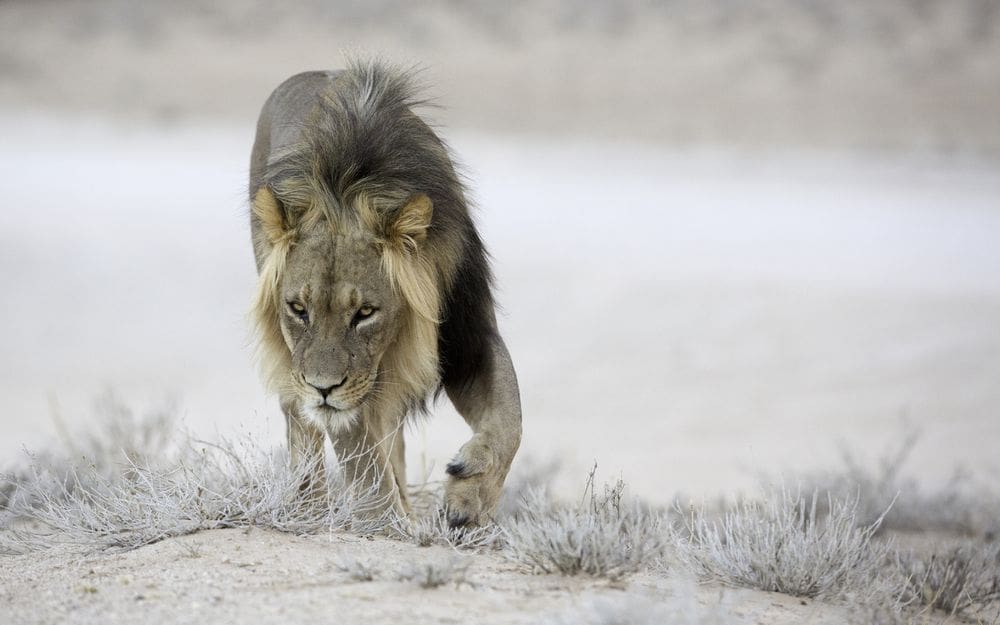
5. Chobe National Park, Botswana
Chobe National Park is a wildlife lover’s dream, especially if you’re obsessed with elephants.
Located in northern Botswana, Chobe is famed for its massive elephant herds and stunning riverfront scenery.
It’s a dynamic and diverse park, offering both land and water-based game viewing experiences that are sure to thrill any adventurer.
Unique Features
The Chobe Riverfront is the park’s most popular area, known for its breathtaking views and abundant wildlife. The river is a lifeline for animals, especially during the dry season when elephants, buffalo, and hippos flock to its banks.
Boat safaris on the Chobe River provide a unique perspective and opportunities to see wildlife up close. The park is also home to predators like lions and leopards, and birdwatchers will be delighted by the over 450 bird species recorded here.
Location & Access
Chobe is easily accessible from the town of Kasane, which is a gateway to the park. Kasane is just a short drive from the borders of Zimbabwe, Zambia, and Namibia, making it a convenient stop for travelers exploring multiple countries.
Flights into Kasane Airport are available from Johannesburg and other regional hubs. The park’s proximity to Victoria Falls (about 1.5 hours by road) makes it an excellent addition to a Southern Africa itinerary.
Costing
Entry fees for Chobe National Park are around BWP 120 per person per day. Accommodation in Kasane ranges from budget campsites starting at BWP 200 per night to high-end lodges that can cost over BWP 5000 per night.
Inside the park, you’ll find a few exclusive lodges offering luxurious stays amidst the wilderness.
Tips for Visiting
- Best Times to Visit: The dry season (May to October) is prime time for wildlife viewing, especially for seeing large herds of elephants. The wet season (November to April) brings lush landscapes and baby animals, along with great birdwatching.
- Essential Gear: Pack a good pair of binoculars, a camera with a zoom lens, sunscreen, insect repellent, and plenty of water. A map of the park is also useful.
- Recommended Routes: Drive along the Chobe Riverfront for incredible wildlife sightings. The Sedudu Gate entrance near Kasane is a great starting point. Combine your self-drive with a boat safari for a complete Chobe experience.
Chobe National Park is an electrifying destination that offers a bit of everything – from vast herds of elephants to the serene beauty of the Chobe River. Whether you’re cruising along the riverbanks or navigating the park’s tracks, Chobe promises an adventure that’s both exhilarating and unforgettable.
So, grab your gear and head to Chobe for an epic self-drive safari that will leave you with stories to tell for a lifetime.

6. Moremi Game Reserve, Botswana
Nestled within the Okavango Delta, Moremi Game Reserve is a jewel of Botswana’s wilderness.
This park combines lush wetlands with dry savannahs, offering a rich and varied landscape teeming with wildlife.
Moremi is the epitome of an unspoiled African safari experience, where nature reigns supreme and each moment is a discovery.
Unique Features
Moremi is renowned for its incredible biodiversity. The reserve’s landscapes include floodplains, lagoons, grasslands, and forests. This variety supports a vast array of wildlife, including elephants, buffalo, lions, leopards, and the elusive African wild dog.
The birdlife is equally impressive, with over 400 species recorded. The combination of water and land makes Moremi unique, offering both classic game viewing and opportunities for water-based activities like mokoro (dugout canoe) excursions.
Location & Access
Moremi Game Reserve is located in the northeastern part of the Okavango Delta. The nearest town is Maun, which serves as the gateway to the Delta. Maun is accessible by road and air, with regular flights from Johannesburg and other regional hubs.
From Maun, Moremi is about a 4-5 hour drive, requiring a 4×4 vehicle due to the rough terrain and water crossings.
Costing
Entry fees for Moremi Game Reserve are around BWP 120 per person per day for international visitors. Accommodation options vary from basic campsites at around BWP 150 per night to luxury lodges that can cost upwards of BWP 6000 per night.
The reserve’s campsites, such as Third Bridge, Xakanaxa, and Khwai, offer rustic but beautiful settings, often right by the water.
Tips for Visiting
- Best Times to Visit: The dry season (May to October) is the best time for wildlife viewing, as animals are easier to spot in the thinning vegetation and around water sources. The wet season (November to April) brings lush scenery and great birdwatching, but some areas may be inaccessible due to flooding.
- Essential Gear: Bring a good pair of binoculars, a high-quality camera with a zoom lens, sunscreen, insect repellent, and plenty of water. A GPS device and detailed map are crucial for navigation.
- Recommended Routes: Start your journey from South Gate and head towards Third Bridge, known for its excellent wildlife sightings and scenic views. The route to Xakanaxa Camp offers diverse habitats and great game viewing opportunities. For a more remote experience, explore the Khwai area, where the landscapes are stunning and the wildlife abundant.
Moremi Game Reserve offers an unparalleled safari experience in one of Africa’s most beautiful and biodiverse regions. Whether you’re gliding through the delta’s waterways or driving through its savannahs, Moremi promises adventure, breathtaking scenery, and unforgettable wildlife encounters.

7. Pilanesberg National Park, South Africa
Nestled in the crater of an ancient volcano, Pilanesberg National Park is a fascinating blend of unique geological formations and diverse wildlife.
Located in the North West Province of South Africa, it’s a popular safari destination that offers a malaria-free environment and the chance to see the Big Five.
Pilanesberg is perfect for those seeking an accessible yet thrilling safari experience.
Unique Features
Pilanesberg’s landscape is a striking mix of rocky outcrops, open grasslands, and wooded valleys, all set within the remnants of a long-extinct volcanic crater. This unique terrain supports a rich variety of flora and fauna.
The park is home to the Big Five – lions, leopards, rhinos, elephants, and buffalo – as well as cheetahs, hippos, and over 300 bird species. The scenic beauty combined with the abundance of wildlife makes every game drive a visual treat.
Location & Access
Pilanesberg National Park is conveniently located about a 2.5-hour drive from Johannesburg and Pretoria, making it an ideal weekend getaway. The park is easily accessible by car, with well-maintained roads leading to the main gates.
For those flying in, O.R. Tambo International Airport in Johannesburg is the nearest major airport, with rental cars available for the drive to the park.
Costing
Entry fees for Pilanesberg National Park are approximately ZAR 110 per adult per day. Accommodation options range from budget campsites at around ZAR 200 per night to luxurious lodges that can cost up to ZAR 4000 per night.
The park offers a variety of lodging options, including Bakgatla and Manyane resorts, which provide both camping and chalet accommodations.
Tips for Visiting
- Best Times to Visit: Pilanesberg can be visited year-round, but the dry winter months (May to September) are ideal for wildlife viewing, as animals are more easily spotted around water sources. The summer months (October to April) bring lush landscapes and excellent birdwatching opportunities.
- Essential Gear: Bring binoculars, a camera with a good zoom lens, sunscreen, insect repellent, and plenty of water. A detailed map of the park and a guidebook can enhance your game viewing experience.
- Recommended Routes: Start your journey at the park’s main entrance, Manyane Gate. Explore the popular routes like the Hippo Loop and the Mankwe Dam area for frequent wildlife sightings. The Tshukudu Dam is another hotspot, especially for watching animals come to drink.
Pilanesberg National Park offers an extraordinary safari experience within easy reach of Johannesburg and Pretoria.
With its unique volcanic landscapes, diverse wildlife, and excellent facilities, it’s a fantastic destination for both first-time safari-goers and seasoned adventurers.
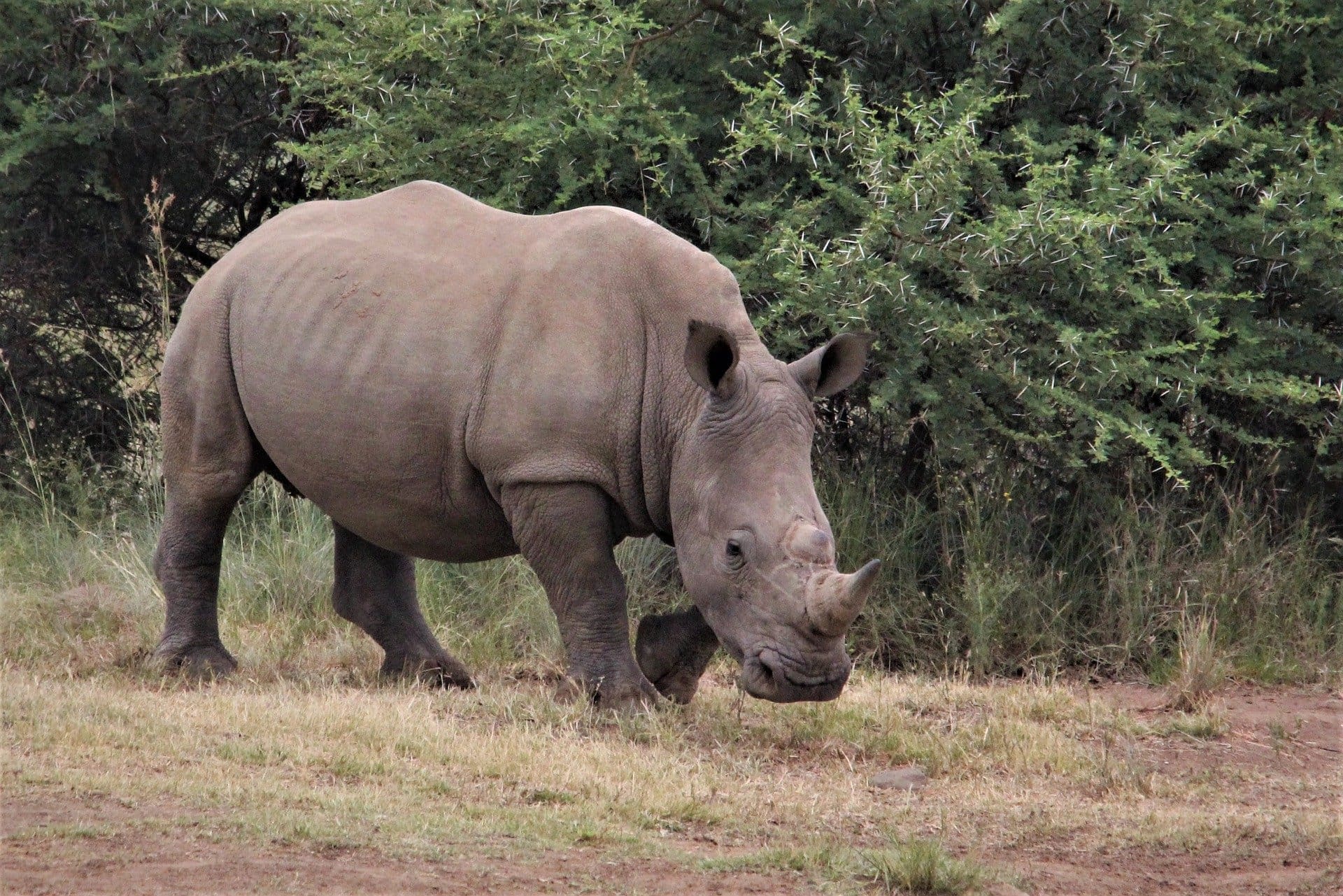
8. Hluhluwe-iMfolozi Park, South Africa
Hluhluwe-Imfolozi Park, located in KwaZulu-Natal, is one of Africa’s oldest game reserves and a pioneer in wildlife conservation.
This iconic park offers a rich blend of history, biodiversity, and breathtaking landscapes. It’s renowned for its rhino conservation efforts and provides an authentic safari experience in the heart of Zululand.
Unique Features
Hluhluwe-Imfolozi Park is divided into two distinct sections: Hluhluwe in the north and Imfolozi in the south. The park is famous for its rolling hills, dense forests, and wide open savannahs.
It’s home to the Big Five and boasts one of the largest populations of white rhinos in the world. The park also offers a chance to see the endangered African wild dog, alongside lions, leopards, elephants, and buffalo. The diverse habitats support a variety of other wildlife, including giraffes, zebras, and over 340 bird species.
Location & Access
The park is situated about a 2.5-hour drive from Durban, making it easily accessible for both day trips and extended stays.
The main entry points are Memorial Gate in the north and Nyalazi Gate in the south. For those flying in, King Shaka International Airport in Durban is the closest major airport, with car rental options available for the drive to the park.
Costing
Entry fees for Hluhluwe-Imfolozi Park are approximately ZAR 240 per adult per day for international visitors, with discounted rates for South African residents. Accommodation options vary from basic campsites at around ZAR 200 per night to more upscale lodges that can cost up to ZAR 3500 per night.
Popular accommodations include Hilltop Camp and Mpila Camp, both offering a range of facilities and services.
Tips for Visiting
- Best Times to Visit: The dry winter months (May to September) are ideal for wildlife viewing, as animals congregate around water sources and the vegetation is less dense. The summer months (October to April) are warmer and wetter, providing lush landscapes and excellent birdwatching opportunities.
- Essential Gear: Pack a good pair of binoculars, a high-quality camera with a zoom lens, sunscreen, insect repellent, and plenty of water. A detailed map of the park and a field guide can enhance your game viewing experience.
- Recommended Routes: Start at Memorial Gate and explore the northern Hluhluwe section for its scenic views and dense forests. The Hilltop Loop offers great wildlife sightings and panoramic vistas. In the southern Imfolozi section, the Mpila Camp area and the Sontuli Loop are known for their excellent game viewing opportunities, including rhino sightings.
Hluhluwe-Imfolozi Park is a testament to the beauty and resilience of African wildlife. With its rich history, diverse ecosystems, and successful conservation efforts, it offers an unforgettable safari experience.
Whether you’re a wildlife enthusiast or a casual traveler, Hluhluwe-Imfolozi promises an adventure that connects you with the heart of Zululand.
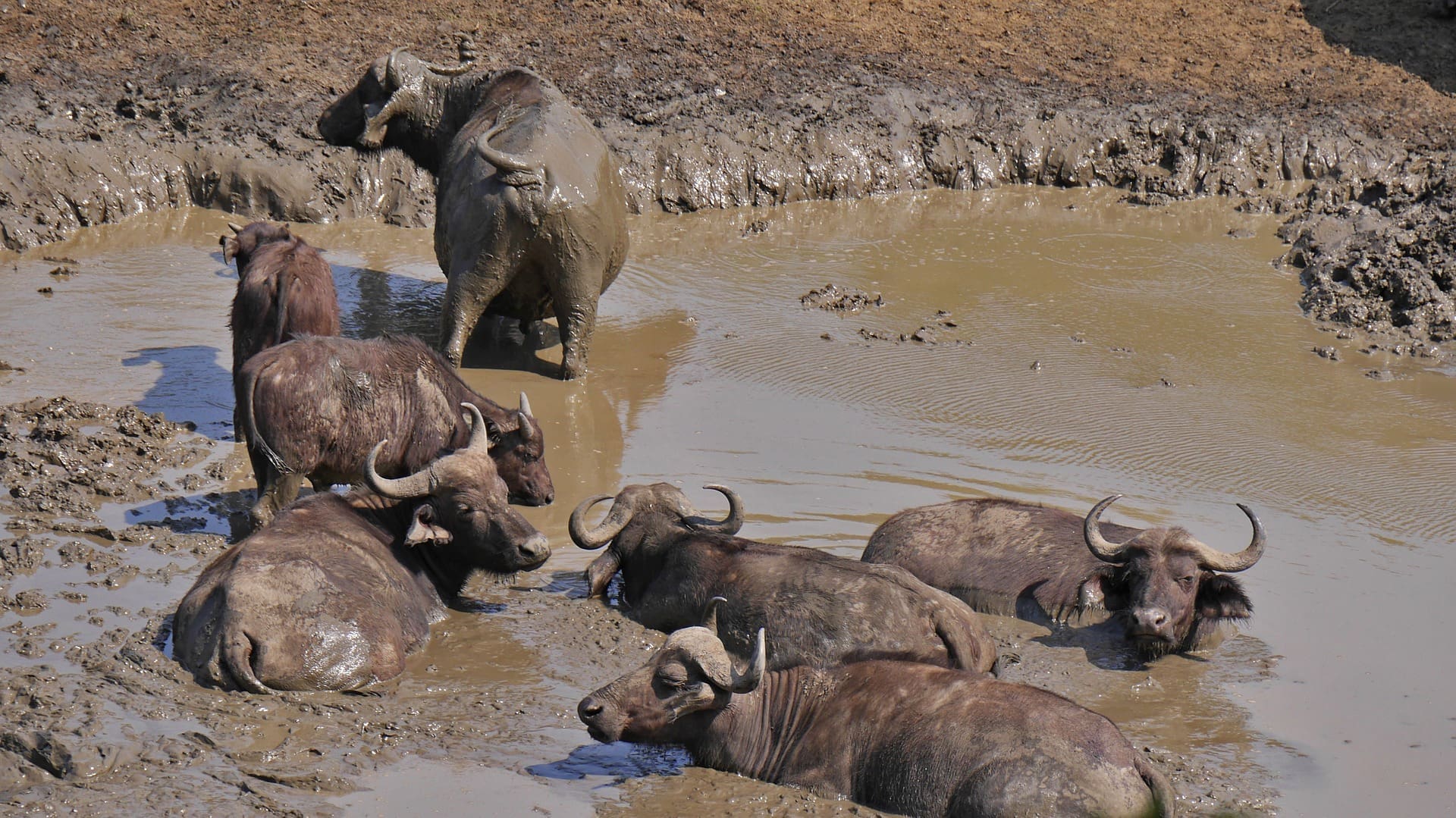
The Reserve is situated 280 kilometres/175 miles north of Durban in KwaZulu-Natal, South Africa and is home to all of Africa’s Big Five as well as other big game species including Cheetah, the endangered Wild Dog and Nyala. Various hides overlooking pans and waterholes enable visitors to see animals at close range.
Accommodation ranges from tented camps to various luxury lodges, and the reserve is in a low risk malaria area so it is advisable to consult your doctor before travelling. The nearest town with a full range of services and amenities is Mtubatuba, about 45 minutes away.
9. Namib-Naukluft National Park, Namibia
Namib-Naukluft National Park is where desert landscapes meet safari adventures. Spanning nearly 50,000 square kilometers, it’s one of the largest conservation areas in Africa.
Known for its towering dunes, surreal landscapes, and unique desert-adapted wildlife, Namib-Naukluft is a must-visit for any adventurous traveler looking to experience the stark beauty of Namibia’s desert.
Unique Features
The park is home to some of the most iconic desert scenery in the world. The Sossusvlei area, with its red dunes and white clay pans, is particularly famous. Dune 45 and Big Daddy offer some of the most spectacular views and are popular spots for sunrise hikes.
The Deadvlei, with its ancient, desiccated trees standing in contrast to the white clay pan and red dunes, looks like a scene from another planet. The park also hosts the Namib Desert’s unique wildlife, including oryx, springbok, and the rare Hartmann’s mountain zebra.
Location & Access
Namib-Naukluft National Park is located in the southwestern part of Namibia. The most popular entry point is the Sesriem Gate, which provides access to the Sossusvlei area. Sesriem is about a 5-6 hour drive from Windhoek, the capital of Namibia.
The roads are generally well-maintained, but a 4×4 vehicle is recommended for navigating the sandy tracks and exploring more remote areas.
Costing
Entry fees for Namib-Naukluft National Park are approximately NAD 100 per person per day for international visitors. Accommodation options range from basic campsites at around NAD 200 per night to luxurious lodges that can cost up to NAD 5000 per night.
Sesriem Campsite and Sossus Dune Lodge are popular choices, offering easy access to the main attractions of Sossusvlei and Deadvlei.
Tips for Visiting
- Best Times to Visit: The cooler months from April to October are the best time to visit, as daytime temperatures are more manageable for exploring the desert. The landscape is also at its most striking during these months.
- Essential Gear: Bring plenty of water, sunscreen, a wide-brimmed hat, sunglasses, and a camera with a good zoom lens. Binoculars are useful for spotting wildlife, and a detailed map of the park is essential.
- Recommended Routes: Start from the Sesriem Gate and head towards Sossusvlei, stopping at Dune 45 for a sunrise hike. Continue to Big Daddy dune and Deadvlei for some of the most iconic desert landscapes. For those with more time, explore the Naukluft Mountains area, which offers excellent hiking and stunning views.
Namib-Naukluft National Park offers a unique and mesmerizing safari experience in one of the world’s most dramatic landscapes. From the towering dunes of Sossusvlei to the wildlife-rich plains, this park is a testament to the beauty and resilience of nature.
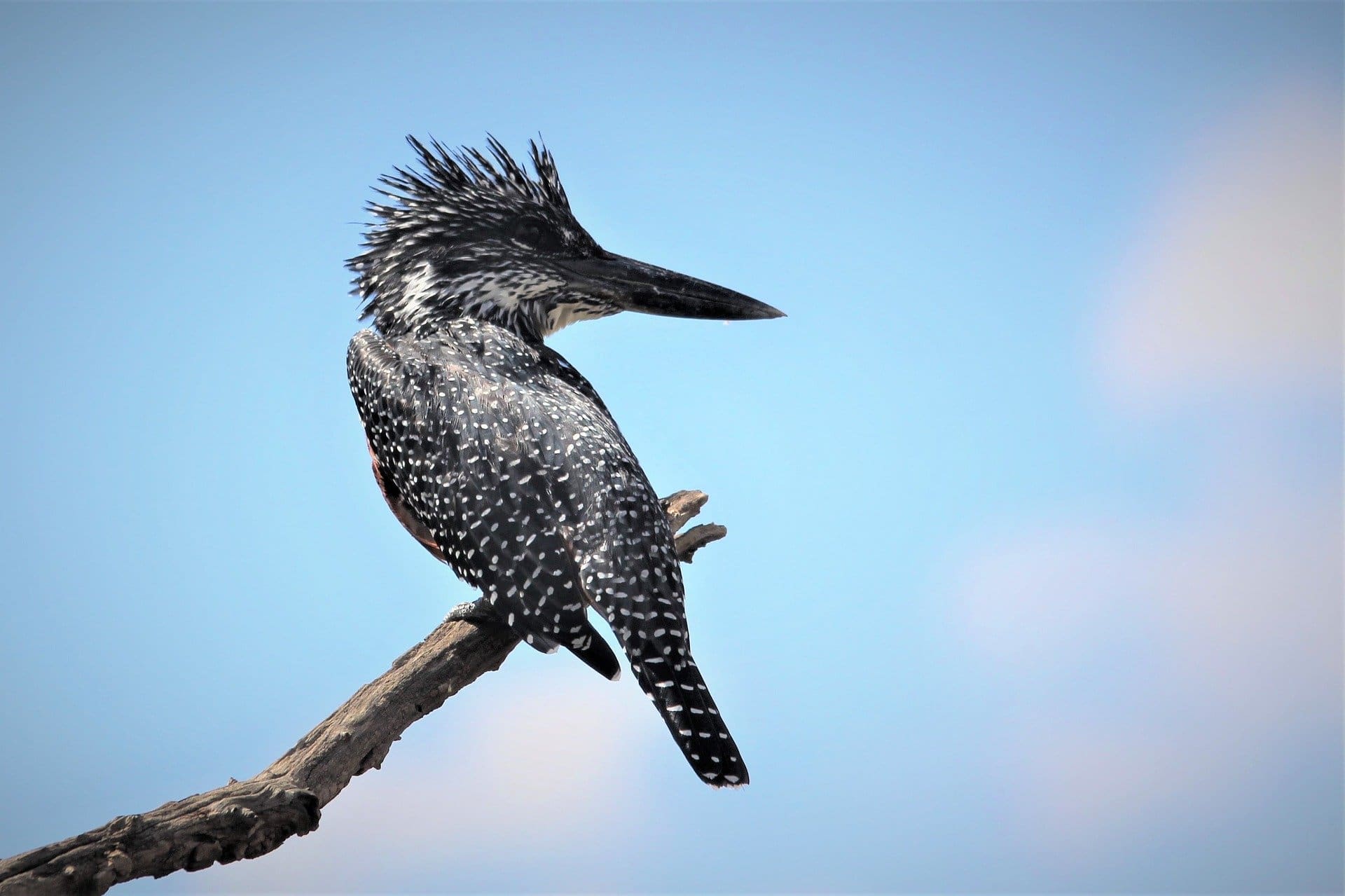
10. Hwange National Park, Zimbabwe
Hwange National Park is Zimbabwe’s largest and oldest game reserve, often overlooked by travelers but revered by those in the know.
This sprawling park is a haven for wildlife, boasting one of the largest elephant populations in Africa and a rich diversity of other species.
It’s a place where you can experience the raw, untamed beauty of the African bush without the crowds.
Unique Features
Hwange is famous for its enormous elephant herds, particularly around the waterholes during the dry season. The park is also a stronghold for wild dogs, an endangered species that is a rare sight in other parts of Africa.
With over 100 mammal species and nearly 400 bird species, Hwange offers an unparalleled safari experience. The varied landscapes, from semi-desert scrub to woodlands and grasslands, create a picturesque backdrop for wildlife viewing.
Location & Access
Hwange is located in the northwest corner of Zimbabwe, about a two-hour drive from the iconic Victoria Falls. The main access point to the park is through the Main Camp, which is well signposted from the main road.
For those flying in, Victoria Falls Airport is the closest major airport, with regular flights from Johannesburg and other regional hubs.
Costing
Entry fees for Hwange National Park are around USD 20 per person per day for international visitors. Accommodation ranges from budget campsites at around USD 10 per night to mid-range lodges and luxury safari camps that can cost up to USD 600 per night.
Main Camp, Sinamatella, and Robins Camp offer a range of affordable lodging options, including self-catering chalets and basic camping facilities.
Tips for Visiting
- Best Times to Visit: The dry season (June to October) is the best time for wildlife viewing, as animals congregate around waterholes. The green season (November to May) offers lush landscapes and excellent birdwatching, but wildlife can be more dispersed.
- Essential Gear: Pack binoculars, a camera with a zoom lens, sunscreen, insect repellent, and plenty of water. A detailed map of the park is also essential.
- Recommended Routes: Start at Main Camp and explore the nearby waterholes like Nyamandhlovu Pan for high concentrations of wildlife. The loop from Main Camp to Sinamatella and back offers diverse habitats and excellent game viewing. The drive to the remote Robins Camp takes you through some of the park’s most scenic areas.
Hwange National Park is a hidden gem waiting to be discovered. With its vast landscapes, abundant wildlife, and off-the-beaten-path charm, it offers an authentic and unforgettable safari experience.
